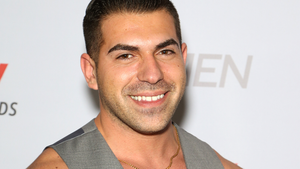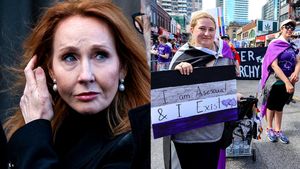As schools were letting students out for summer break around this time last year, I was starting some of my most important work for youth in the District of Columbia. As the associate director of government affairs at the Trevor Project, the only national accredited suicide prevention and crisis intervention organization serving lesbian, gay, bisexual, transgender, and questioning youth, I was helping Councilmember David Grosso draft Bill 21-361, which would require the development of a model school suicide prevention policy and training for teachers to address the specific needs of LGBTQ youth.
According to the Centers for Disease Control and Prevention's Youth Risk Behavior Survey in 2012, nearly 15 percent of D.C.'s students ages 11-17 had contemplated suicide at some point, with the number more than doubling for the LGBTQ population, ages 11-13. The city that I call home was going through a silent health epidemic that I had to help change. Now, thanks to the help of Councilmember Grosso and advocates from the American Foundation for Suicide Prevention and the DC Center, I am proud to say that Mayor Muriel Bowser has signed the Youth Suicide Prevention and School Climate Survey Act into law. This law, with its focus on an LGBTQ-specific policy and training, is the first of its kind in the nation.
The importance of establishing laws that focus on the LGBTQ population cannot be overstated, as LGB youth are four times more likely to attempt suicide than their heterosexual peers and between 40 percent and 50 percent of transgender individuals will attempt suicide at some point in their lifetime. With the enactment of Bill 21-361, there is now model legislative language that other jurisdictions can use to implement similar policies in their schools. In fact, California has already held a hearing on a similar bill requiring middle and high schools to adopt suicide prevention policies that specifically address the needs of LGBTQ youth, among other high-risk subgroups.
So what does this mean for schools in D.C.? The Office of the State Superintendent of Education will develop a model school policy on suicide prevention, intervention, and postvention* for schools to implement that specifically addresses the needs of LGBTQ youth. Fortunately, the Trevor Project has already developed a model policy that can provide research-based assistance. Teachers will also be required to complete a comprehensive suicide prevention training so that they are able to not only identify students who may be at risk of suicide but also understand how to intervene when students need to be further evaluated. To ensure that teachers are equipped with the most up-to-date information on suicide, teachers will receive this training every two years, which will be most effective when teachers also have our model policy to guide them.
Unfortunately, too many students have had to struggle alone with thoughts of harming themselves because suicide has been and is still treated as taboo in the United States. It's a subject that schools are traditionally reluctant to discuss, let alone address. When I was barely 16, I remember my high school statistics teacher gave an assignment to research two topics and plot the statistics rates on a graph to see if there was a correlation. I remember choosing the topic of suicide and sexual assault; these were two issues I thought would certainly be correlated. When my teacher saw the issues I was researching, she took me outside of the class and told me I needed to pick two new issues to work on because she didn't want to have to be "worried about" me, and then shuffled me back into the classroom. Back then, my school didn't train teachers about suicide, nor did it have a suicide prevention policy. Luckily I was able to reach out to adults in other ways and finally received the assistance I needed, but what if I hadn't continued to reach out? What if the shame and embarrassment I experienced because of her reaction was too much to handle? The provisions in this new law will help ensure that situations like this never occur.
The focus on schools as a key suicide prevention setting is fitting, as youth spend a large part of their waking hours either at school or attending school-related activities. School systems have a responsibility to protect the health and safety of their students. For years, schools have focused their efforts on important safety issues like bullying, gangs, weapons in schools, and more. Although bullying doesn't cause suicide, research does show a high correlation. Many school systems across the country have implemented antibullying programs and policies, and suicide prevention policies and training naturally complement these efforts. It is now time for states and schools to turn their attention to suicide, which connects to all the other issues above.
Suicide prevention policies and training are especially important now in light of the recent rash of states passing so-called "religious freedom" laws allowing LGBT people to be denied services and often preventing transgender individuals from using restrooms that correspond with their gender identity. A study was just published that showed that individuals who had been denied the right to use the restroom that corresponded with their gender identity had increased suicide rates. These anti-transgender laws are harming youth, perhaps in more ways than we initially thought. The data indicates the need to focus on LGBT-specific suicide training and policies not only in these states but also in jurisdictions like D.C., which despite having some of the strongest protections in place for LGBTQ youth, still has far too many youth attempting and dying by suicide.
We can't waver in our fight to help save young lives in D.C. or in any other place. With this law, we are not only helping LGBTQ youth but also foster and homeless youth as well as those living with mental illness and substance use disorders, all problems that disproportionately impact LGBTQ youth. Through early identification and intervention, this law is a low-cost but highly impactful long-term investment in young people's futures. We can do better for young people who should be receiving treatment, but are not being diagnosed, do not have access to mental health professionals, or who face stigma and shame that keep their mental health challenges from being addressed. Just one supportive person can reduce an individual's risk for suicide by 30 percent. Please choose to become that beacon of hope for a young person and together we can reverse the statistics on suicide, state by state.
To take part in the Trevor Project's advocacy efforts, join the group in celebrating Ally Honoree Councilmember David Grosso Friday at Hotel Monaco and register for advocacy updates here.
*Postvention= a term used to describe efforts that should be undertaken after a suicide death to prevent more deaths
 AMY LOUDERMILK leads the Trevor Project's policy and advocacy efforts. She's worked in the field of LGBT health for over a decade and serves as an expert on LGBTQ intimate partner violence and sexual assault. The Trevor Project is the leading national organization focused on crisis intervention and suicide prevention efforts among LGBTQ youth. Every day, the Trevor Project saves young lives through its free and confidential lifeline, educational materials, online resources, and advocacy. For more information, visit TheTrevorProject.org.
AMY LOUDERMILK leads the Trevor Project's policy and advocacy efforts. She's worked in the field of LGBT health for over a decade and serves as an expert on LGBTQ intimate partner violence and sexual assault. The Trevor Project is the leading national organization focused on crisis intervention and suicide prevention efforts among LGBTQ youth. Every day, the Trevor Project saves young lives through its free and confidential lifeline, educational materials, online resources, and advocacy. For more information, visit TheTrevorProject.org.


 AMY LOUDERMILK leads the Trevor Project's policy and advocacy efforts. She's worked in the field of LGBT health for over a decade and serves as an expert on LGBTQ intimate partner violence and sexual assault. The Trevor Project is the leading national organization focused on crisis intervention and suicide prevention efforts among LGBTQ youth. Every day, the Trevor Project saves young lives through its free and confidential lifeline, educational materials, online resources, and advocacy. For more information, visit
AMY LOUDERMILK leads the Trevor Project's policy and advocacy efforts. She's worked in the field of LGBT health for over a decade and serves as an expert on LGBTQ intimate partner violence and sexual assault. The Trevor Project is the leading national organization focused on crisis intervention and suicide prevention efforts among LGBTQ youth. Every day, the Trevor Project saves young lives through its free and confidential lifeline, educational materials, online resources, and advocacy. For more information, visit 















































































